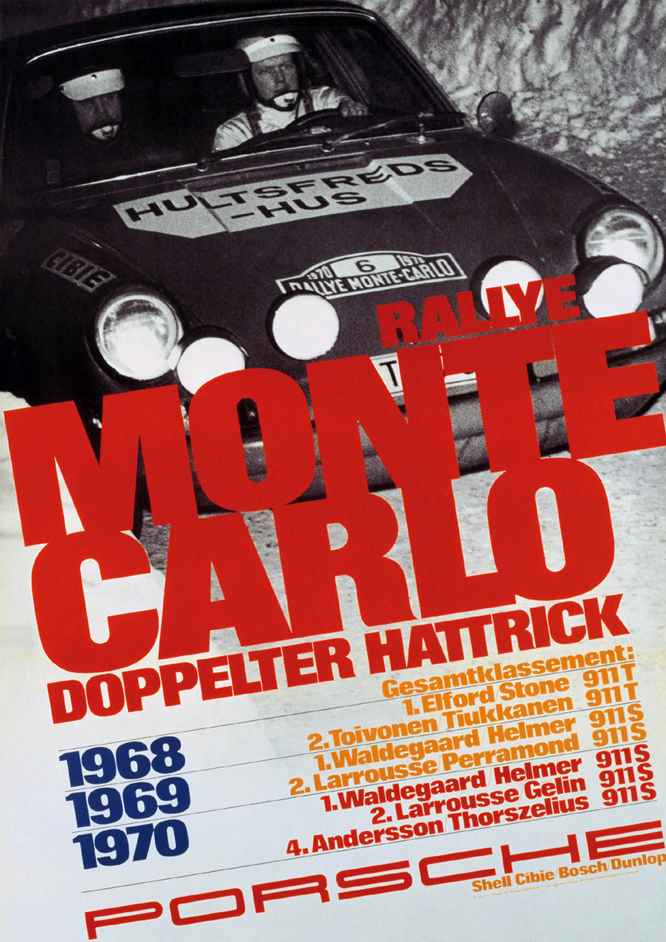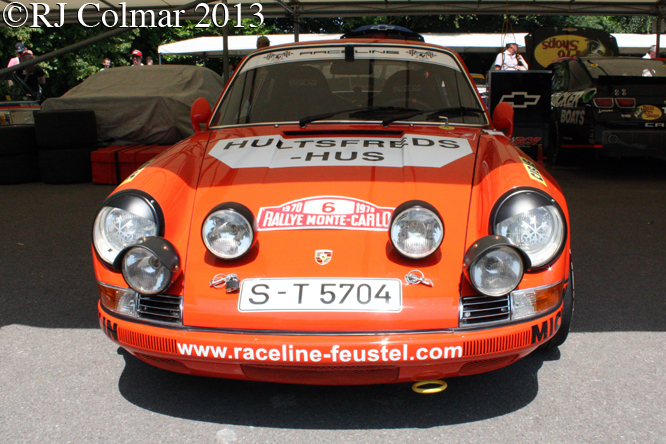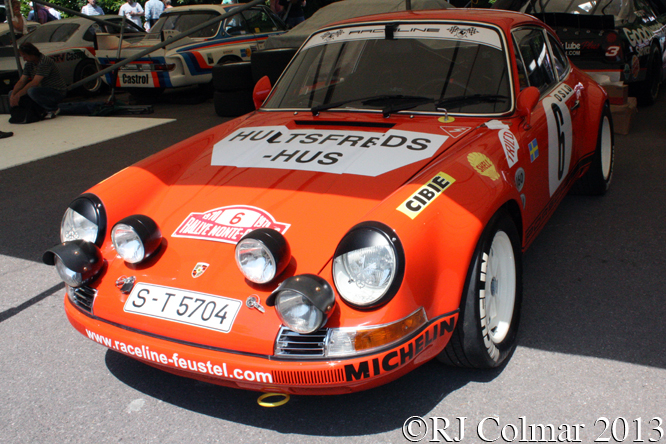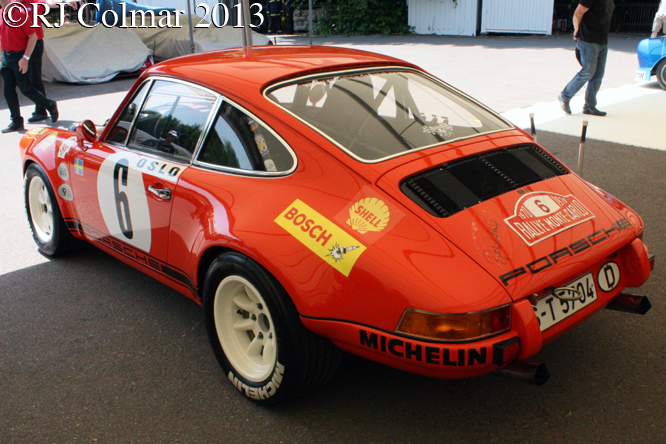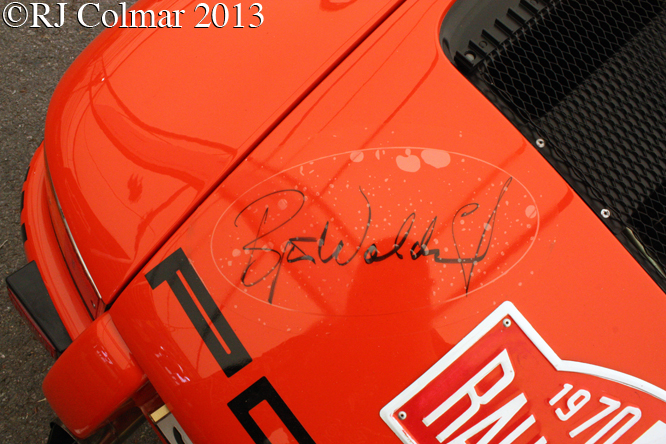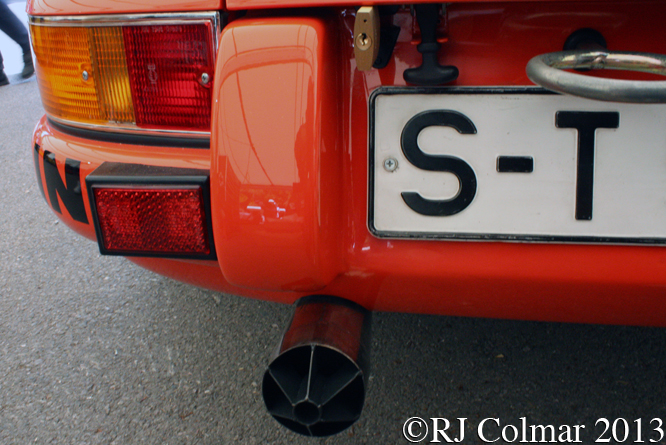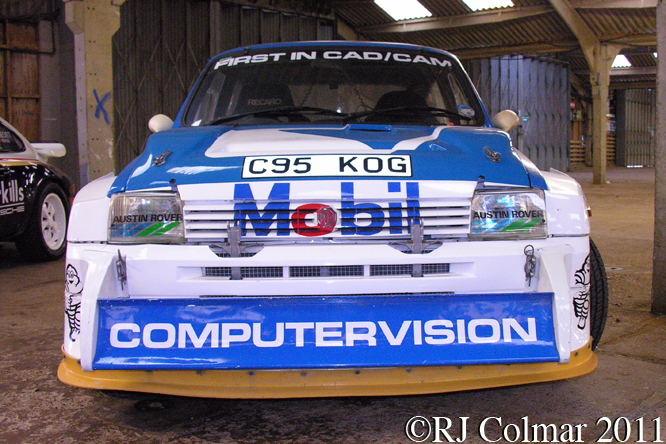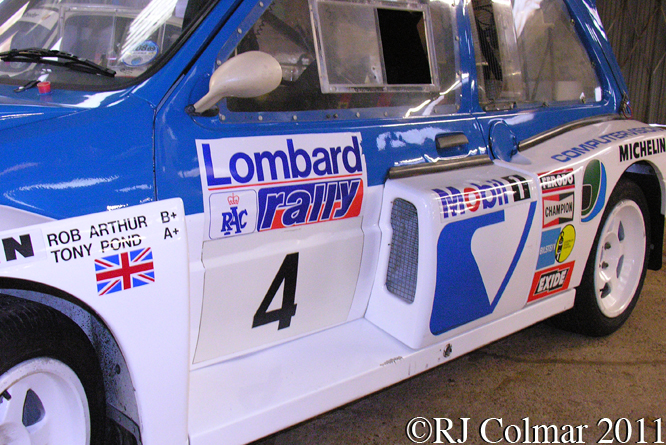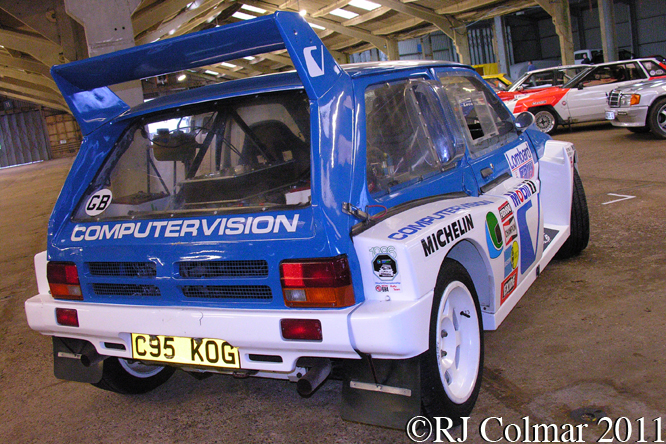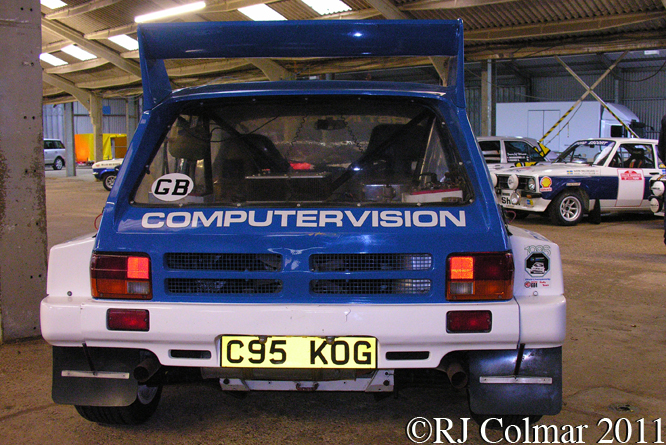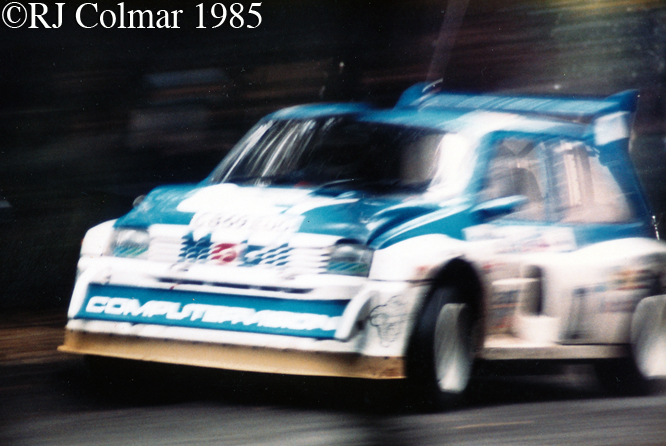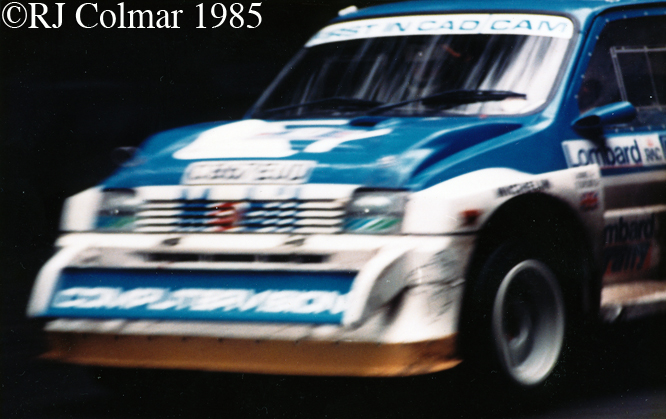In 1978 the Martini sponsored works Porsche team produced two variants of the 911 to take outright victories in events which the model had not won, the first was the 750hp Porsche 935 78 known as Moby Dick which was designed to win the Le Mans 24 hours, it finished fourth, and the second was the 300hp Porsche 911 SC Safari, featured today, which was designed to win the Safari Rally in Kenya. The 911 SC Safari that stands nearly one foot off the ground is without question one of my favourite rally cars, it’s the one car in which James Bond’s Martini is guaranteed to arrive well shaken but not stirred.
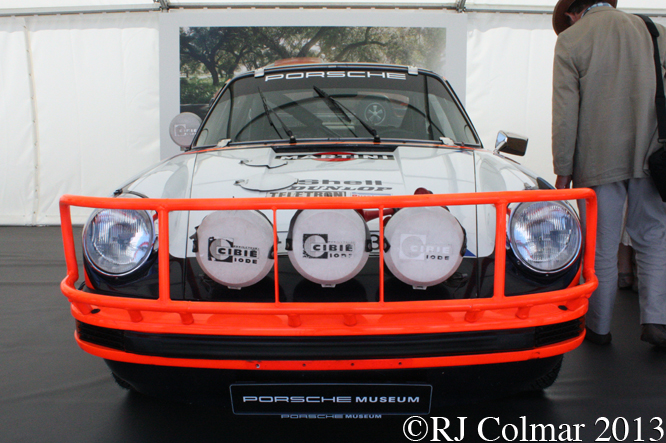
As we saw on Saturday by 1970 the 911 had proved itself in the snowy conditions of Sweden and the tarmac conditions of a dry Monte Carlo rally with Bjorn Waldegård at the wheel, it’s smaller 912 sibling had won the European Rally Championship with Sobiesław Zasada at the wheel, the only thing missing from the 911’s curriculum vitae was a win a respected ‘loose surface’ rally like the Safari Rally. This absence was not for lack of trying a 911 covered in ‘kanga’roo bars was driven by Sobiesław Zasada in the 1968 London to Sydney Marathon and sensationally worked it’s way up from 13th to 4th position on the final Australian leg of the 7000 mile rally.
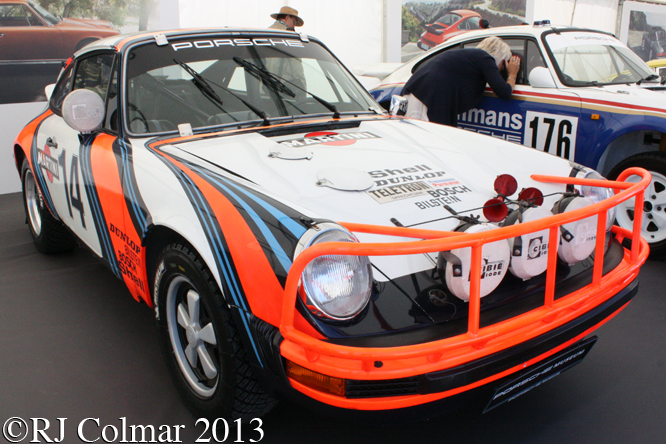
In 1971 Waldegård driving a works 911 looked set for a win on the East African Safari Rally until he was blinded by dust from his team mate Zasada while trying to over take him on the road and ended up crashing out while Zsada survived to finish 5th. In 1974 Bjorn came home second in the East African Safari driving a 911 RS and it was not until 1978 that Porsche returned to East Africa with a two car team that included today’s featured #14 car driven by Vic Preston Jnr. Team mate Waldegård, who won the 1977 edition of the Safari driving a Ford, returned to Zuffenhasen to drive the similar #5 911 SC.
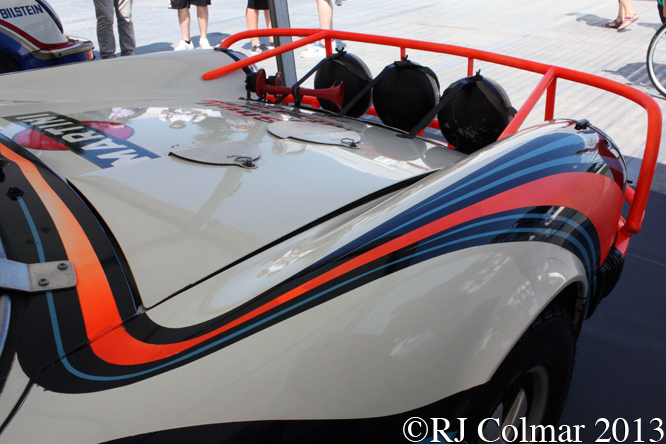
The roads used on the Safari in 1978 were mostly graded tracks, tarmac is rarely used because the population is sparsely distributed and the intense daily short bursts of rain in the rainy season would likely as not wash tarmac away in abrasive currents of subsequent surface water drainage. The ’78 Safari was run in wet conditions but the competition between the Porsche, Datsun now Nissan, and Peugeot teams remained close. Waldegård and H Thorszelius led the first leg but then a rock damaged the suspension and they could only recover a 4th place finish.
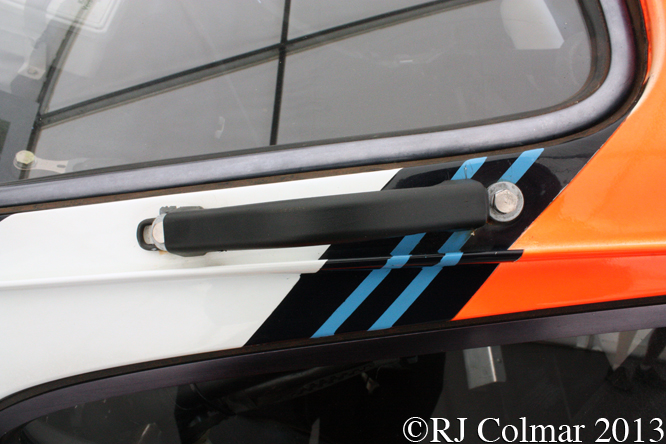
Vic Preston Jnr and J Lyall finished second in today’s featured car behind the Peugeot 504 V6 of Jean Pierre Nicolas and Jean Todt J-C Lefebvre. The winners finished the timed sections with the fastest times overall only to crash in to an unexpectedly U turning vehicle on the untimed road section back to the ceremonial finish line in Niarobi. The Peugeot was badly damaged but the occupants unharmed. After repairs Nicolas managed to drive to the finish with a holed radiator.
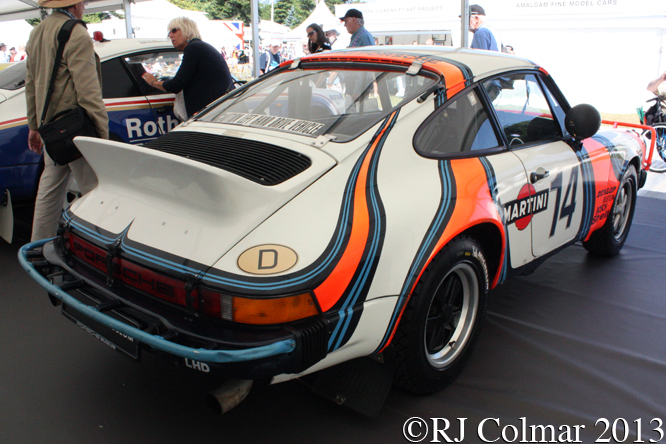
Ironically Jean Pierre Nicholas with Vincent Laverne win in the 1978 Monte Carlo Rally driving a superceded Porsche 911 Carrera RSR meant that Porsche maintained their lead in the World Rally Championship. By the seasons end a privately entered Porsche in San Remo had scored one additional podium finish for the Zuffenhausen marque in the World Rally Championship as the works team involvement was aimed solely at winning the prestigious Safari. The 4th place final championship placing was edged by 1978 champions FIAT, Ford, for whom Bjorn also drove in 1978 and Opel, each of these teams had elected pass on the extreme endurance test of the Safari in Kenya.
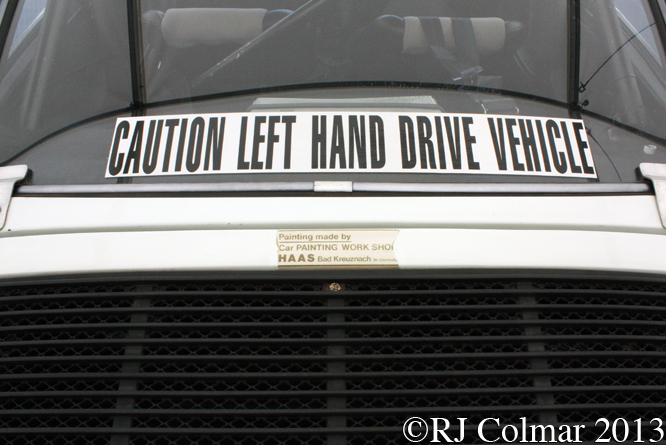
The 1978 Safari was the last World Championship Rally the works team entered although some years later the Porsche name would return with Prodrive prepared cars. With no prospect of rallying regulations turning to favor a Porsche entry it would appear the marque which has dominated so many other area’s of the sport is destined to never win the Safari Rally. In 2011 Waldegård driving a 1972 Porsche 911 2.4 prepared by Francis Tuthill did win the classic version of the Safari Rally, a small consolation for the man and the marque.
The following season Martini shifted the main focus of it’s motorsports sponsorship to the Lotus formula one team.
Thanks for joining me on this “The Striped One” edition of “Gettin’ a li’l psycho on tyres” I hope you will join me again tomorrow when I’ll be looking at some Formula One Automobillia. Don’t forget to come back now !


